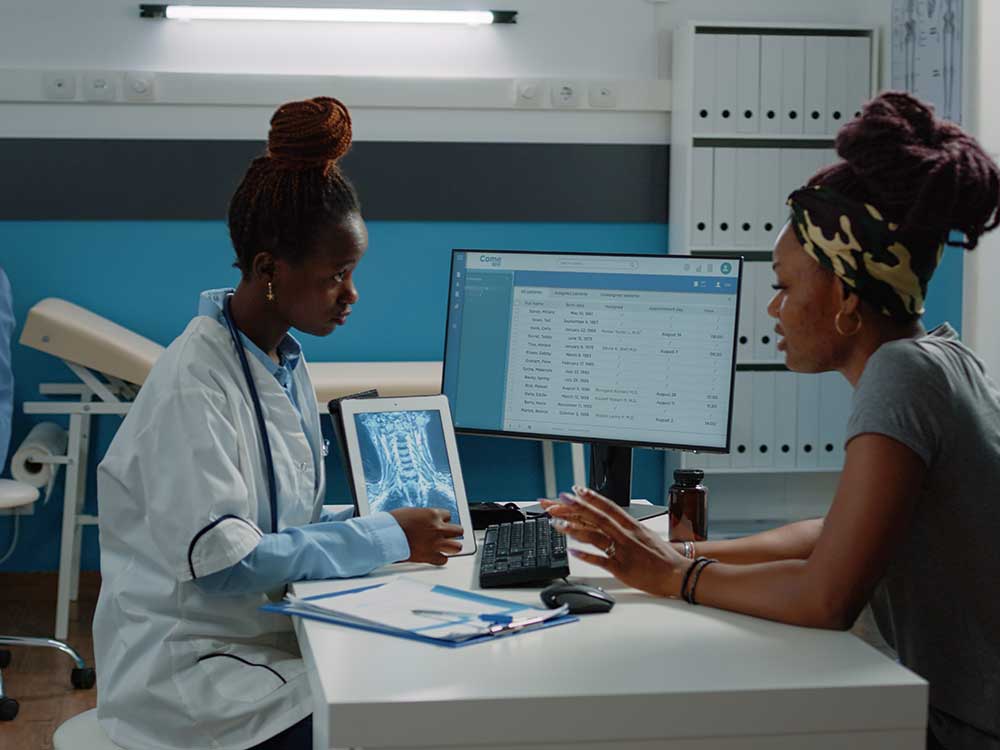Medical Administration Careers: Discovering Job Opportunities and Wages
Medical Administration Careers: Discovering Job Opportunities and Wages
Blog Article
Finest Practices in Medical Administration for Improving Efficiency and Lowering Expenses
In the ever-evolving landscape of health care, the pursuit of best techniques in medical management is vital for improving efficiency and suppressing costs. By integrating innovative technologies such as digital health and wellness records and telemedicine, medical care providers can simplify procedures and improve client care. Technology alone is not a remedy; optimizing source allocation and cultivating collaborative interaction amongst care teams are just as important. As companies strive to stabilize quality and expense, what approaches should be prioritized to attain these double objectives? The solution to these concerns hold the trick to a much more lasting health care system.
Leveraging Advanced Technology
The combination of digital services into medical care systems has actually transformed the way centers run, improving procedures and enhancing patient treatment. By systematizing person info, EHRs eliminate the demand for cumbersome documentation and promote smooth communication amongst health care carriers.
Telemedicine is another technological innovation that has revolutionized person interaction. It offers comfort for both clients and medical care specialists by allowing remote consultations, which can minimize the need for in-person brows through and enhance consultation scheduling. In addition, telehealth platforms can expand healthcare accessibility to rural or underserved areas, linking spaces in care distribution.
Additionally, using Artificial Intelligence (AI) and artificial intelligence is coming to be increasingly prevalent in anticipating analytics, allowing for early discovery of potential health and wellness concerns and more educated decision-making. These modern technologies, when incorporated successfully, can improve analysis precision and personalize individual therapy plans, inevitably leading to improved medical care end results and operational efficiency.
Optimizing Resource Allowance
By tactically handling resources such as personnel, devices, and financial resources, health care facilities can significantly enhance their operational efficiency, boost person outcomes, and reduce unneeded expenses. The very first step in maximizing source allotment includes conducting a comprehensive evaluation of present possessions and identifying locations where sources may be underutilized or exhausted.
Focusing on resource allowance based on patient needs and service needs is crucial. Executing adaptable staffing models can likewise maximize labor resources by changing employees allowance in response to varying person volumes.
Monetary sources need to be meticulously kept an eye on and designated with tactical insight to sustain both temporary functional needs and long-term institutional goals. This consists of investing in training programs that improve team competencies and adopting energy-efficient methods that minimize functional prices (medical administration). Inevitably, an optimized source allotment method cultivates a lasting medical care setting that is receptive, reliable, and monetarily sensible
Streamlining Operations Procedures
When medical care centers goal to boost functional effectiveness, enhancing workflow processes becomes a pivotal emphasis. Reliable operations lessen redundancy, get rid of unnecessary actions, and boost sychronisation among health care experts. This method not only accelerates solution delivery yet also boosts the quality of patient treatment.

Next, innovation assimilation plays a significant duty in enhancing workflows. Implementing electronic health and wellness records (EHRs) and electronic physician order entrance (CPOE) systems reduces paperwork, minimizes human mistake, and makes sure info is accessible to all pertinent personnel. Additionally, leveraging telemedicine systems can streamline client consultations and follow-ups, minimizing the pressure on physical infrastructure.

Eventually, streamlined workflows result in cost reductions and improved patient complete satisfaction, promoting a much more sustainable healthcare setting.
Enhancing Information Monitoring
Building upon streamlined workflows, optimizing information monitoring ends up being a crucial element in progressing health care administration. Reliable information administration systems are important for maintaining accurate patient documents, boosting decision-making, and making sure compliance with regulatory criteria. By carrying out robust information management remedies, health care facilities can boost the top quality of client treatment while simultaneously lowering functional costs.
One trick element of boosting information administration is the assimilation of advanced digital health and wellness record (EHR) systems. These systems assist in the seamless exchange of individual details across different divisions, minimizing duplication of examinations and minimizing errors. A properly designed EHR system sustains data analytics, enabling doctor to determine trends and make notified decisions relating to client treatment.
Moreover, securing patient data is extremely important. Adopting detailed cybersecurity steps, consisting of security and regular audits, makes certain the honesty and privacy of sensitive info. This not only shields individuals however likewise preserves the institution's track record.
Buying staff training is one more vital variable. Informing medical care professionals on data administration techniques boosts their ability to efficiently use modern technology, bring about improved patient outcomes. To conclude, improving information administration via innovative modern technology and extensive training is crucial for attaining performance and price decrease in clinical management.
Fostering Collaborative Interaction
An essential part in progressing medical administration is fostering collaborative interaction amongst medical care experts. Efficient communication is critical for making sure smooth person treatment, enhancing treatment outcomes, and minimizing mistakes. By motivating open dialogue and coordination throughout multidisciplinary teams, healthcare organizations can boost their functional efficiency and reduce unneeded expenses.
Central to this method is the integration of interaction innovations such as electronic wellness documents (EHRs) and protected messaging platforms, which promote the fast exchange of essential patient information. These devices allow doctor to accessibility and share data in real time, making certain that all staff member are notified and straightened in their decision-making processes. Normal group meetings and interdisciplinary rounds can better promote a society of collaboration and liability.
Training programs concentrated on boosting communication abilities are likewise necessary. These programs can assist team develop the capability to share go to this site info plainly and listen proactively, hence decreasing misconceptions and fostering a helpful job environment. In enhancement, taking on standardized interaction procedures, such as SBAR (Scenario, History, Assessment, Suggestion), can simplify the exchange of information, making sure that essential details are communicated succinctly and successfully. Ultimately, fostering collective interaction brings about improved health care shipment and expense financial savings (medical administration).

Conclusion
Integrating innovative innovation, such as electronic health records and telemedicine, together with enhanced source allocation and streamlined operations processes, is important for enhancing efficiency in medical management. Reliable information administration and promoting collective communication amongst medical care groups are critical for decreasing redundancies and enhancing care quality. By focusing on preventative treatment and engaging in top quality improvement initiatives, medical care organizations can achieve significant price savings and improved person end results, consequently making sure sustainable medical care distribution in an increasingly intricate environment.
Report this page